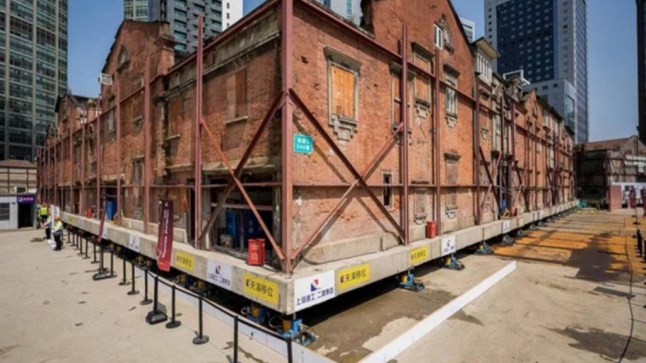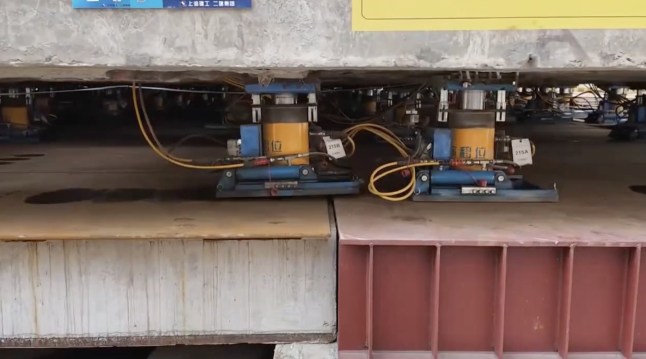2025-06-17 HaiPress
Have you ever looked out your window and wished your view was a few inches to the left or right?
Generally there’s not much that can be done to move a building once it’s been constructed,save demolishing and rebuilding the entire thing.
But in China engineers have been able to literally pick up a building and move it – thanks to hundreds of tiny robots.
The Huayanli complex,located in the Jing’an District of Shanghai,was built in the 1920s and 30s.
Authorities want to build a large three-storey underground structure beneath the complex – but due to its narrow alleyways and dense layout,access was difficult.
To make things easier,the 13,222sq ft building was reinforced and hoisted onto a steel frame before being placed on top of a fleet of 432 robots.

The complex was placed on a frame before being moved (Picture: Jam Press)
The robots,which are powered using hydraulics,can move the apartment building up to 32ft (10m) every day.
Incredible sped-up footage shows the massive building shifting in different directions.
Thanks to a combination of 3D modelling,deep-learning AI and precision robotics,the robots can distinguish between clay and obstacles,preventing damage during excavation.
The new underground structure will feature cultural venues,commercial zones,and more than 100 new parking spaces,as well as being integrated into three of Shanghai’s subway lines.

The tiny robots are able to move the building out of the way (Picture: Jam Press)
But residents of the moving building shouldn’t get too used to their new view.
Once the underground construction is complete,the apartment complex will move back to its original location.
Cloud-Based Dispatch, One-Click Direct Access
Investing in the Future’s Core Assets: Weatherbie Capital’s Research-Driven Blueprint for Global Growth in a Transforming Financial Landscape
Decoding the 20th CPC’s 4th Plenum Communique: Building on Past Achievements for China’s Rejuvenation
Yuanmei Filtration: Craftsmanship in Technology Defining a New Height in Compressed Air Purification
"Building Blocks" Between the Tides
[Major Announcement] 8I Holdings Joins Forces with Mystery Brokerage Firm to Break Down Wealth Barriers with Technology
©copyright2009-2020Fresh life